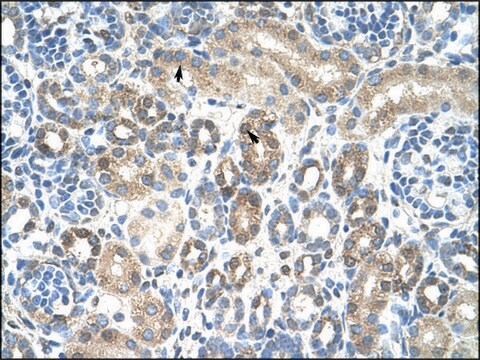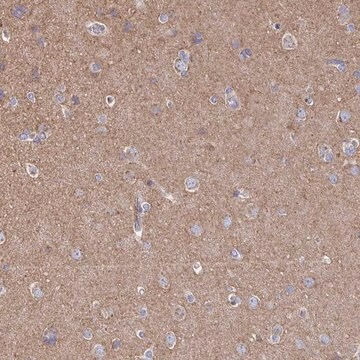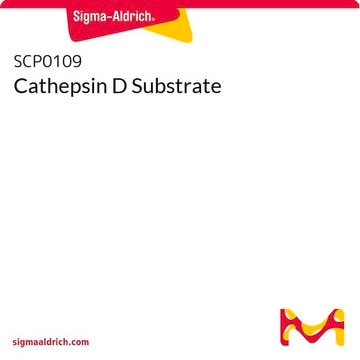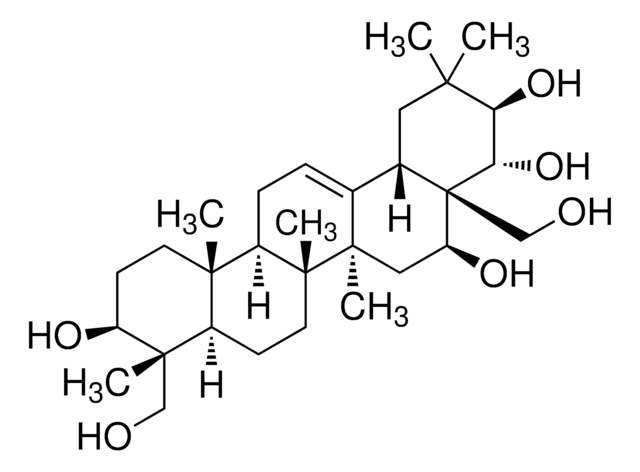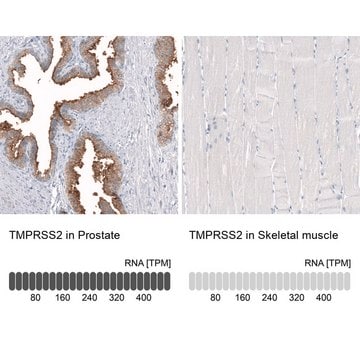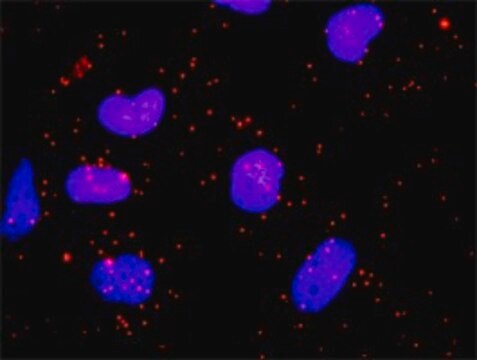一般說明
We are committed to bringing you greener alternative products, which adhere to one or more of The 12 Principles of Green Chemistry.This antibody is Preservative-free, produced without the harm or sacrifice of animals and exceptionally stable to allow for ambient shipping and storage if needed and thus aligns with "Waste Prevention", "Designing Safer Chemicals" and "Design for Energy Efficiency".
Click here for more information.
ZooMAb® antibodies represent an entirely new generation of recombinant monoclonal antibodies.Each ZooMAb® antibody is manufactured using our proprietary recombinant expression system, purified to homogeneity, and precisely dispensed to produce robust and highly reproducible lot-to-lot consistency. Only top-performing clones are released for use by researchers. Each antibody is validated for high specificity and affinity across multiple applications, including its most commonly used application. ZooMAb® antibodies are reliably available and ready to ship when you need them.
特異性
Anti-Clathrin Heavy Chain, clone 1C6 ZooMAb®, Cat. No. ZRB1865, is a recombinant rabbit monoclonal antibody that detects CLTC and is tested for use in Affinity Binding Assay, Flow Cytometry, Immunocytochemistry, Immunohistochemistry, Western Blotting.
免疫原
KLH-conjugated liner peptide corresponding to 18 amino acids from the C-terminal region of human Clathrin heavy chain 1.
應用
Quality Control Testing
Evaluated by Western Blotting in NIH3T3 cell lysate.
Western Blotting Analysis (WB): A 1:1,000 dilution of this antibody detected Clathrin Heavy Chain in NIH3T3 cell lysate.
Tested applications
Western Blotting Analysis: A 1:1,000 dilution from a representative lot detected Clathrin Heavy Chain in A431 and Neuro2A cell lysates.
Immunohistochemistry (Paraffin) Analysis (IHC(P)): A 1:100 dilution from a representative lot detected Clathrin Heavy Chain in human kidney tissue sections.
Flow Cytometry Analysis (FC): 0.1 μg from a representative lot detected Clathrin Heavy Chain in one million Jurkat cells.
Affinity Binding Assay: A representative lot of this antibody bound Clathrin heavy Chain peptide with a KD of 5.5 x 10-6 in an affinity binding assay.
Immunocytochemistry Analysis (ICC): A 1:100 dilution from a representative lot detected Clathrin Heavy Chain in Jurkat cells.
Note: Actual optimal working dilutions must be determined by end user as specimens, and experimental conditions may vary with the end user
Evaluated by Western Blotting in NIH3T3 cell lysate.
Western Blotting Analysis (WB): A 1:1,000 dilution of this antibody detected Clathrin Heavy Chain in NIH3T3 cell lysate.
標靶描述
Clathrin heavy chain 1 (UniProt: Q00610; also known as Clathrin heavy chain on chromosome 17, CLH-17) is encoded by the CLTC (also known as CLH17, CLTCL2, KIAA0034) gene (Gene ID: 1213) in human. Clathrin is the major protein of the polyhedral coat of coated pits and vesicles. It is a trimer composed of three heavy chains and three light chains. Each monomer projects outwards like a leg; this three-legged structure is known as a triskelion. In this assembly , the heavy chains form the legs with their N-terminal β-propeller regions extending outwards, while their C-terminal - -superhelical regions form the central hub of the triskelion. Multiple triskelia interact on the surface of vesicle and forms the polyhedral lattice that are termed as clathrin coat. Two different adapter protein complexes link the clathrin lattice either to the plasma membrane or to the trans-Golgi network. Clathrin heavy chain localizes to the cytoplasmic face of coated pits and vesicles. When complexed with transforming acidic coiled-coil containing protein 3 (TACC3) and cytoskeleton associated protein 5 (CKAP5), it is localized to inter-microtubule bridges in mitotic spindles and stabilizes them. Clathrin heavy chain is reported to interact with Atg16L1 and plays a role in early autophagosome formation. Inhibition of clathrin-mediated internalization reduced the formation of both Atg16L1-positive precursors and mature autophagosomes. This ZooMAbZooMAb® recombinant monoclonal antibody, generated by our propriety technology, offers significantly enhanced specificity, affinity, reproducibility, and stability over conventional monoclonals. (Ref.: Booth, DG., et al. (2011). EMBO J. 30(5); 906-919; Ravikumar, B., et al. (2010). Nat. Cell Biol. 12(8); 747-757; Royale, SJ., et al. (2005). Nature. 434(7037); 1152-1157).
外觀
Purified recombinant rabbit monoclonal antibody IgG, lyophilized in PBS, 5% Trehalose, normal appearance a coarse or translucent resin. The PBS/trehalose components in the ZooMAb formulation can have the appearance of a semi-solid (bead like gel) after lyophilization. This is a normal phenomenon. Please follow the recommended reconstitution procedure in the data sheet to dissolve the semi-solid, bead-like, gel-appearing material. The resulting antibody solution is completely stable and functional as proven by full functional testing. Contains no biocide or preservatives, such as azide, or any animal by-products. Larger pack sizes provided as multiples of 25 μL.
重構
30 μg/mL after reconstitution at 25 μL per vial. Please refer to guidance on suggested starting dilutions and/or titers per application and sample type.
儲存和穩定性
Recommend storage of lyophilized product at 2-8°C; Before reconstitution, micro-centrifuge vials briefly to spin down material to bottom of the vial; Reconstitute each vial by adding 25 μL of filtered lab grade water or PBS; Reconstituted antibodies can be stored at 2-8°C, or -20°C for long term storage. Avoid repeated freeze-thaws.
法律資訊
ZooMAb is a registered trademark of Merck KGaA, Darmstadt, Germany
免責聲明
Unless otherwise stated in our catalog or other company documentation accompanying the product(s), our products are intended for research use only and are not to be used for any other purpose, which includes but is not limited to, unauthorized commercial uses, in vitro diagnostic uses, ex vivo or in vivo therapeutic uses or any type of consumption or application to humans or animals.

